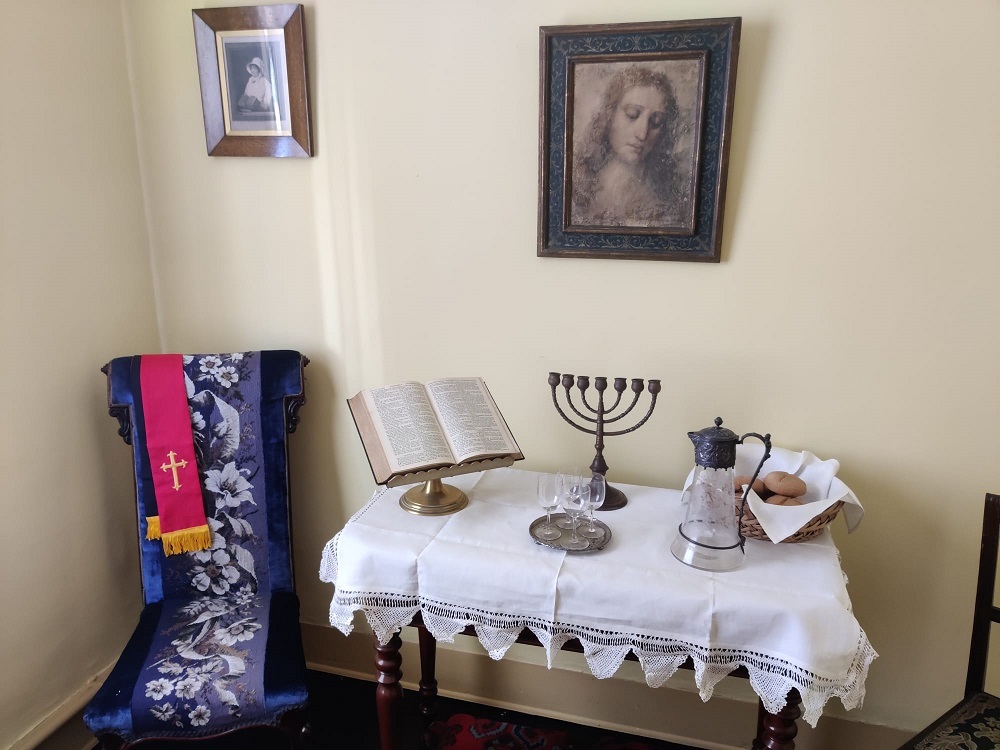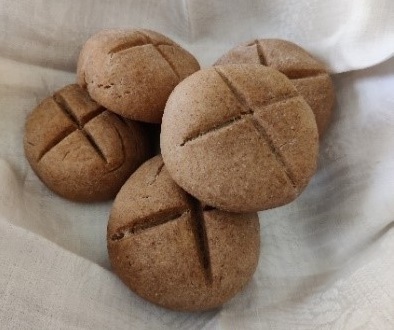The Bread of Life- Panaceans and Communion
- written by Zara Matthews, Museum Director
Bread in the Eucharist
The Eucharist, or Holy Communion or Lord’s Supper, is a Christian act of worship. The word Eucharist is from the Greek word, eucharistia, which means ‘thanksgiving’.
At the Last Supper Jesus blessed the bread before sharing it with his disciples, saying that it was his body. He also blessed the wine as he shared it saying that it was his blood. This is why Christians share wine and bread at Holy Communion.
Octavia shared water instead of wine when taking the Eucharist with her followers.

Bread in 1919, England
During the First World War there were flour shortages, there were also laws setting out what bakers could and couldn’t do. White flours were strictly limited, and bakers were not allowed to make bread from white flour by law.
To reduce the amount of bread people ate a new law stated that bakers could only sell bread that was over 12 hours old. It was thought people would eat less bread if it was stale.
Due to flour shortages wheat flour was often mixed with other types of flour such as rye, or had other ingredients added including potatoes.
The laws restricting the sale of bread and ongoing food shortages meant that in 1919 bread was still much like bread during the War, until the restrictions were lifted in 1921.
The price of bread in 1919 was about 9d (about £5.20 in 2022).

Octavia’s Bread
Octavia wanted things done properly and liked quality. We can only guess, however she may have purchased or had made bread specially for this occasion, and it seems likely it would have been the best quality available.
How I made this bread for display
I adapted a recipe from the internet for salt dough:
2 cups rye flour
1 cup plain flour
1 cup salt
1 ½ cups water
2 tsp. coffee from a cup made up for colour
2 tbsp. vegetable oil for brushing
Mix dry ingredients, add water and coffee, mix into a dough. I used a large spoon and then my hands to mix. Sprinkle flour on hands and divide into small sections. Roll into a ball, pat into shape and score across top with knife to make a cross. I brushed the tops with oil to give a better colour. Bake in oven 150°C for about 1½ hours. At 1 hour I turned them over to ensure their bottoms also dried. Leave on wire rack to cool completely. They won’t rise and the shape you make is exactly how they will look after baking. When cooked through the bread is rock hard, not for eating.
This was my second attempt. First time I tried to make a loaf, which took some hours to cook through and when I cut a slice off the end the bread sparkled with salt crystals. It was also really difficult to saw the end off the loaf and advise against it.
I decided to make a cross in the tops of the rolls as I thought this might be something Octavia could have done, similar to the cross on a hot cross bun, showing the special purpose of this bread.
Find out more:






